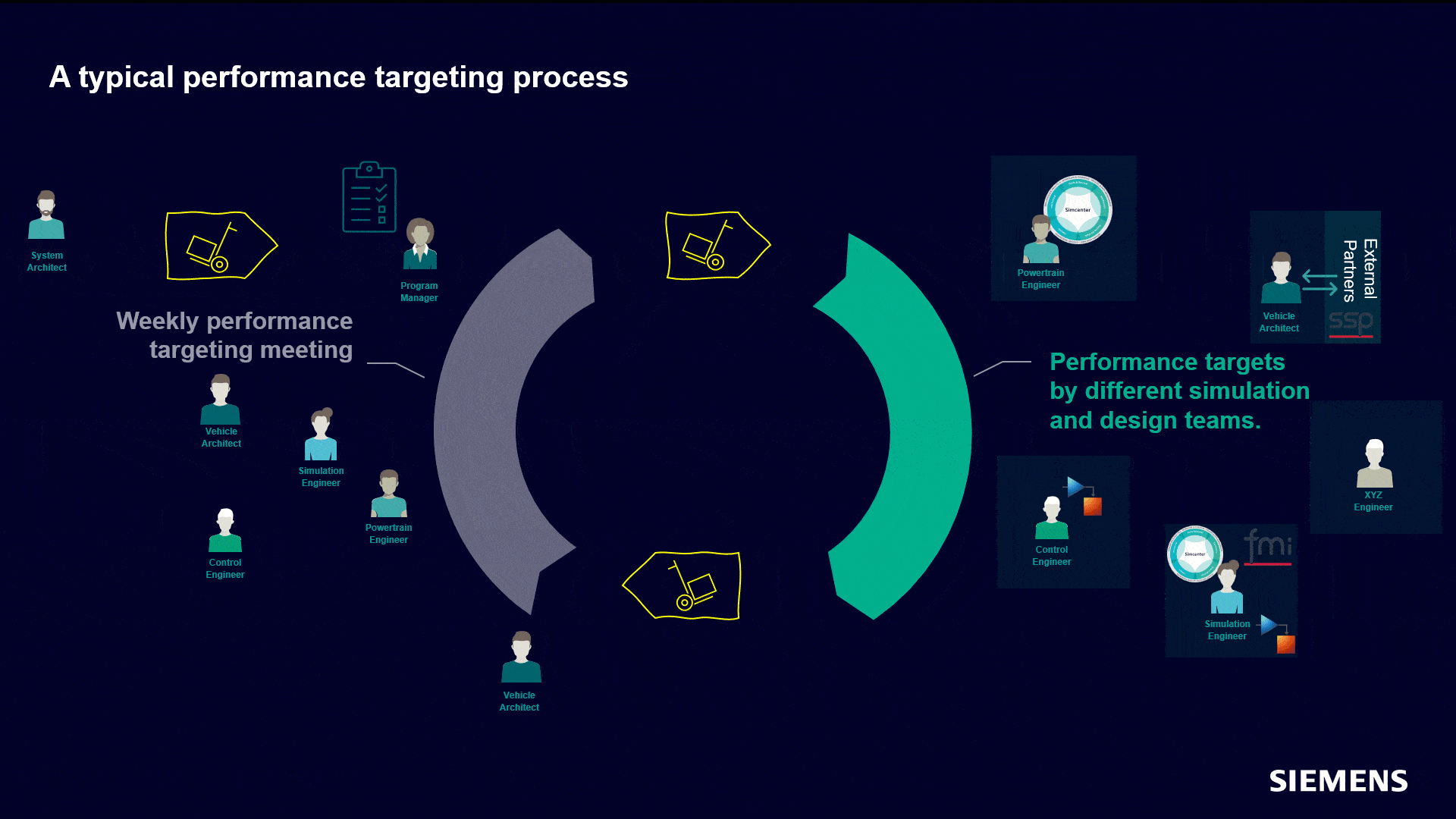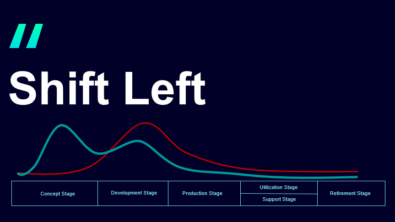MBSE with Simcenter: The rise of AI is just the latest chapter in a long story of computers being smarter and faster than us. Let’s make the most of it!

It’s finally happened – that raw feeling that we risk being outmanoeuvred by a computer program is here and taken residence in the public psyche.
But the reality is – this moment has been bearing down on us for years. Computers have always been better than humans at many things. Consistency, rigour, an endless appetite for hard work – they outsmart and outrun us in so many ways.
Remember 1996?
This is around the time when many of us (who are old enough) would have first found that a computer could perform boring, repetitive tasks much better than we could.
At the bleeding edge of 1996 technology, we saw a chess computer named Deep Blue beat the sitting world champion under tournament conditions. Impressive!
But as futuristic as it seemed at the time, the Deep Blue chess computer has naturally succumbed to the same destiny that awaits all IT hardware and software. As Kasparov commented in 2016:
Today you can buy a chess engine for your laptop that will beat Deep Blue quite easily
Gary Kasparov
26 years of progress since Deep Blue has brought us to the point where computers are not just competitive at chess, but are starting to encroach our territory of language, style, even art…. to the point of creating that uncomfortable feeling.
Humans vs machines: who will win in the end?
Many believe it doesn’t have to be one versus the other (sorry, Hollywood!). In fact, in Kasparov’s mind, it is the combination of human and computer which is truly unbeatable:
[competing with computers in chess is] about our ability to play high-quality moves for many hours. Human psychology works against us. If I have a computer, even a very weak one, at my side, the tables could be turned, and I or some strong GM would be able to beat a very powerful computer, because I can guide the machine and definitely eliminate blunders, the very root of human weakness when facing the computer. That is why I am promoting the idea of combining our forces.
Gary Kasparov
Here, Kasparov is referring to his idea of ‘advanced chess’ where human contestants use computers to augment their own game. It so happens that the same idea of human and computer complementing and elevating each other is exactly where we are headed with advanced CAE tools for generative engineering, MBSE and MDAO.
From advanced chess to advanced engineering
As the technology develops, so the value of engineering simulation is shifting from informing decision-making to guiding decision making. And this shift is growing ever more powerful. For example, take Simcenter Studio, an AI-powered generative engineering tool which helps you to explore and understand system architectures in the early concept phase of design.
One of the key strengths of Simcenter its ability to explore numerous design directions in a very short time – helping engineers to avoid so-called design fixation by finding innovative new solutions and ideas that the human mind might not stumble across in a quick brainstorming session.
Days to hours, hours to minutes, minutes to seconds
The April 2023 release of the Simcenter MBSE toolset takes this turbocharging to new heights.
- 4x faster model creation workflow with intelligent error detection and support
- 20x solver speed improvement for generating architectures
- 200x faster optimal controller generation
Not bad progress over the past six months! These numbers are representative over a number of example cases. There’s usual caveat – your mileage may vary – but something that previously took days will now be more like hours. And something that took hours will now take minutes. And… you get the idea. These are major speedups that will help you to achieve your engineering goals more quickly and easily.
Revving up the SysML v2.0 engine
Another area where we are seeing continual development is in enabling the latest MBSE methodologies supported by SysML v2. This release delivers upgrades to the SysML v2 engine in Simcenter Studio which mean you can now import SysML v2 libraries and more easily navigate models, not to mention numerous improvements to the back end and API.
In the video above, you can see the process of importing Arcadia libraries and then the creation of a model with the Arcadia methodology. The new and crucial part here is being able to import the Arcadia methodology as a library. In fact, this works with any methodology you can implement in SysML v2.0. Once imported, you can directly use the library in your generative engineering process, to evaluate your model with the computing capabilities.
Connecting the dots
One of the benefits of digital product development is that when design fall short of requirements, they can be revised and updated at the drop of a hat.
But one inevitable challenge of implementing an MBSE methodology for a complex product development process is in being able to maintain that ‘big picture’ view of performance targeting. In other words, knowing how you are actually doing relative to your overall performance targets, when each subsystem exists as a separate set of simulation models and data.
Bringing your design to life as a complete system means you need to run numerous simulations simultaneously in a coupled manner. This is something which has historically causes many a headache for simulation teams, but is made easy with Simcenter.

More import options, a better modelling experience and support for discrete variables
The latest release of the Simcenter MBSE tools delivers lots of enhancements to the industry-leading co-simulation platform, Simcenter System Architect.
Even more modularity
Modularity on all levels is critical to enabling continuous performance targeting with co-simulation of system architectures. This is why Simcenter System Architect now supports direct import of Simulink and Simcenter Amesim models directly – not only with libraries as before. This delivers a new level of flexibility and accelerates model setup.
Handling unconnected ports
Another fundamental principle of Simcenter System Architect is being able to seamlessly integrate entirely heterogenous models together. Sometimes, mismatches’ arise between input and output ports of connected submodels, especially if they represent different levels of fidelity. This is no longer a showstopper – It is now a simple matter to deal with unconnected ports by assigning a suitable source term.
Combining continuous and discrete signals
Correctly modelling cyber-physical systems involves handling signals or variables which are continuous (e.g. speed, rpm, power) as well as discrete (e.g. gear selection, control switch position). This has always been possible with Simcenter System Architect but, depending on the models used, could introduce instability or other modelling inaccuracies.
With Simcenter System Architect 2304, all variables are now defined as either continuous or discrete as are handled appropriately by the co-simulation engine – another enhancement making the process even more frictionless and giving you more time to spend on engineering.
Humans and machines – better together
In this blog we have explored the headline reasons why you should check out the latest releases for Simcenter Studio and Simcenter System Architect (that’s version 2304). As you can see, Simcenter is developing fast to keep you at the cutting edge of MBSE and equip you to become that formidable combination of human and machine as you tackle the engineering challenges of the future.
…and don’t worry, we (engineers) are not about to be replaced by computers. I’ll leave you with a final chess quote, this time from the Indian chess grandmaster Viswanathan Anand:
I think in general people tend to overestimate the importance of the computer in the competitions. You can do a lot of things with the computer but you still have to play good chess.
Viswanathan Anand


